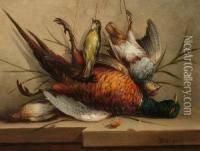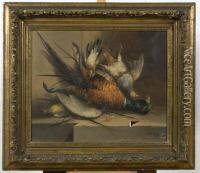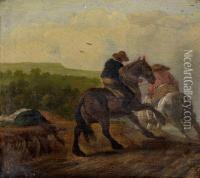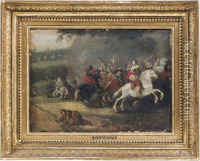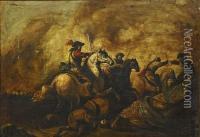Bourguignon Paintings
Pierre Bourguignon, often overlooked in the grand tapestry of 20th-century artists, was a French painter whose work encapsulated the essence of modernist exploration yet remained tethered to classical sensitivities. Born in 1913 in a small village in France, Bourguignon's early life was steeped in the pastoral beauty and historical depth of his homeland, elements that would later permeate his artistic endeavors. Despite the bucolic serenity of his upbringing, Bourguignon was born into a Europe on the cusp of dramatic change, with the shadows of two world wars looming over his formative and adult years. These tumultuous times inevitably influenced his work, infusing it with a sense of urgency and a quest for peace and beauty amidst chaos.
Bourguignon's artistic journey began in earnest in the 1930s when he moved to Paris to study at the École des Beaux-Arts. It was a time when Paris was the epicenter of the art world, buzzing with the innovative spirits of Picasso, Matisse, and many others who were breaking away from traditional forms and exploring new avenues of expression. Bourguignon absorbed these revolutionary changes, incorporating elements of Cubism and Surrealism into his work, yet he never fully abandoned the figurative tradition, striking a balance that was both modern and timeless.
Throughout the 1940s and 1950s, Bourguignon's style evolved, reflecting the darker tones of a world recovering from war yet also capturing the hopeful spirit of reconstruction. His paintings from this period are characterized by a rich, earthy palette and a focus on human figures, often depicted in serene, contemplative states, suggesting a search for inner peace and resilience.
In the 1960s and 1970s, Bourguignon turned his attention to the natural world, with landscapes becoming a dominant theme in his work. These paintings are notable for their abstract qualities, with Bourguignon breaking down natural forms into geometric shapes and vibrant colors, a nod to the influence of Cubism. Yet, they also convey a deep sense of harmony and balance, reflecting his lifelong quest to find beauty and order in a chaotic world.
Pierre Bourguignon's contribution to art was not confined to his paintings. He was also a respected teacher, influencing a new generation of artists through his professorship at the École des Beaux-Arts in Paris. His legacy is that of a bridge between the old and the new, seamlessly blending traditional techniques with modernist ideas to create a body of work that is both unique and reflective of the tumultuous century he lived in. Bourguignon passed away in 1996, leaving behind a rich oeuvre that continues to inspire and captivate art lovers and historians alike.
